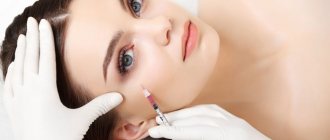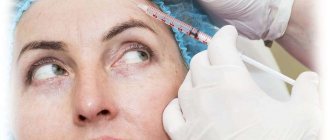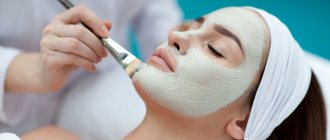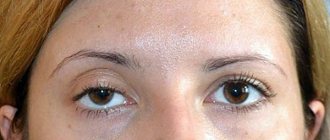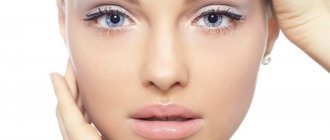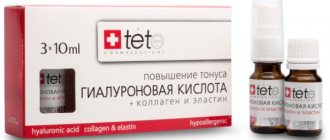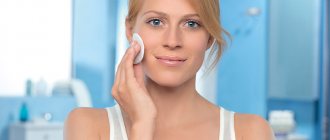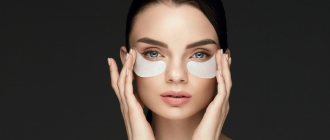It is known that the safety and effectiveness of Botox injections depend on two factors: the professionalism of the doctor and the patient’s compliance with the rules of rehabilitation after the procedures. If the doctor is a truly highly qualified specialist, then almost the only risk of getting unwanted side effects after botulinum therapy (or not getting the expected effect from it) is associated with the fact that the patient does something that cannot be done after Botox.
There is also a small risk of adverse events associated specifically with the individual reaction to Botox itself. However, the practice of cosmetologists shows that it is precisely violations of the rehabilitation period after injections that cause the development of side effects or ineffectiveness of procedures - more often than possible doctor errors and the patient’s individual reaction to the drug taken together.
Simply put, how strictly the patient adheres to the rules of the rehabilitation period largely determines how effective Botox injections will be and whether unwanted reactions will occur after them. Moreover, if the insufficient effectiveness of injections is generally harmless, then the side effects can be quite severe, greatly affecting the appearance, condition of the face and sometimes the general well-being of a person. To prevent this, it is important to strictly follow the doctor’s instructions, even if they seem somewhat excessive.
On a note
Some rules of behavior after Botox may indeed seem unnecessary. So, in fact, it is: some (but not all) instructions are given only for reinsurance and only because neither doctors nor botulinum toxin manufacturers have sufficient statistics confirming that abandoning these rules will be safe. Sometimes patients, realizing this, disdain such restrictions and violate them, and some do this unconsciously, simply not knowing about certain recommendations.
A significant part of the cases of undesirable consequences of botulinum therapy is associated precisely with such self-will, just as there are many situations where violation of the conditions of rehabilitation did not lead to anything bad.
Be that as it may, when injecting Botox, it is useful to know in advance what exactly you should not do after the procedure. Let's take a closer look at these restrictions and find out how strict they are and what the consequences of neglecting them may be...
What should you not do immediately after Botox injections?
First, let's look at all the restrictions after Botox injections, both official and informal, but indicated by most doctors.
There are a number of restrictions after Botox injections, which the doctor will definitely warn you about.
Experts most often prohibit:
- Lie down and take a horizontal body position for 4-5 hours after the procedure (for example, do exercises such as “planks”);
- Bend low and for a long time for 4-5 hours after injections;
- Massage your face, rub it (especially at injection sites) for 3 days after botulinum therapy;
- Train, do fitness, expose the body to great physical activity for 2-3 days after the procedures;
- During the day you cannot steam your face, go to a bathhouse or sauna, or wash your face with hot water;
- 3-4 days after injections, sunbathe in the sun or take a long walk in direct sunlight, go to a solarium;
- Carry out other cosmetic procedures for the face for several days after botulinum therapy;
- Use cosmetics (especially masks that increase blood circulation) for 2 days after Botox injections;
- Drink alcohol for 7-10 days after the procedure;
- Take certain medications, which in some cases can greatly affect the effect of botulinum toxin injections;
- Eat spicy foods and drink hot tea for several hours after injections;
- Visit your dentist after injections into the nasolabial folds and muscles around the lips.
On a note
Stress, strong emotional shocks, and worries are also considered extremely undesirable during the recovery period after injections. However, it would be somewhat absurd to indicate them as contraindications: it is unlikely that a patient in a beauty salon will intentionally create a stressful situation for himself after the procedures. Therefore, this condition can be considered a kind of wish: you should plan your schedule so that the few days after the procedure are as calm and quiet as possible, with minimal risk of worries.
What are all these restrictions connected with and what can happen if they are violated? Let's look at the most important prohibitions and understand their validity.
Eating food and medications
- If your face becomes very swollen in the first hours, it is recommended to reduce the amount of fluid consumed.
- For a day, avoid spicy, sour, bitter, hot foods and drinks. Starting from the next day, there are no restrictions on the choice of products and temperature.
Regarding taking potent medications within 3-5 days after the session, you must first consult with a cosmetologist. Antibacterial drugs, antidepressants, muscle relaxants, anticonvulsants and anticoagulants can negatively affect the effect.
In 2012 studies, the negative effect of vitamins on correction results was not established.
Horizontal body position
After Botox injections, you should not lie down and, especially, take a horizontal position face down for 4-5 hours after the procedure - due to a rush of blood to the head. This influx leads to vasodilation, intensification of biochemical processes in the intercellular space and in the injected muscles themselves. Because of this, part of the botulinum toxin, which has not yet had time to penetrate the nerve cells, may be inactivated, which will lead to a decrease in the effect of the injections: a smaller part of the drug will have the desired effect - therefore, the result will be less pronounced than expected.
For 4-5 hours after the procedure, you should avoid positions where blood flow to the head increases, that is, you should not lie down and bend your head down.
Another effect is also possible: due to the rush of blood to the face and the intense movement of substances in the intercellular space, the dose of botulinum toxin may partially go beyond the boundaries of the muscles into which it was injected and act on neighboring fibers that were not intended to be immobilized. As a result, noticeable cosmetic defects are possible: ptosis, raised eyebrows or both eyebrows, “waxy face.”
It is also useful to read: The use of botulinum therapy in cosmetology: botulinum toxin injections
The likelihood of undesirable consequences if this rule is violated is quite high. After injections, botulinum toxin itself is distributed naturally in the tissues, and the rush of blood to the face is quite capable of influencing its normal distribution.
Therefore, within 4-5 hours after the injections you should either walk quietly or sit - in a car, on a sofa, in a park on a bench, in a cafe at a table. But you can’t go to bed, just lie down on the sofa or bed.
This limitation is especially relevant when injecting into the muscles near the eyes: here the spread of botulinum toxin into neighboring muscles leads to the most noticeable and unsightly side effects.
On a note
For this reason, by the way, it is not advisable to do Botox injections in the afternoon. The less time left after them before bed, the greater the likelihood of undesirable consequences.
The very mechanism by which undesirable phenomena can develop in this case is generally universal. It is the risk of its implementation that is the reason for many other restrictions in the rehabilitation period.
Briefly about Botox and its use
Botox is the common name for botulinum toxin medications.
Botulinum toxin belongs to the group of protein neurotoxins. With the right doses, it temporarily blocks the transmission of nerve impulses to the muscles of a specific part of the body, which provokes complete muscle relaxation.
In medicine, Botox preparations are used to treat spastic diseases (for example, torticollis), blepharospasm, spastic pain syndrome, hemifacial spasm, etc. In cosmetology, Botox has become the most popular means of rapid “rejuvenation”.
Drinking alcohol
When drinking alcohol, blood vessels dilate, which leads to increased blood circulation in the area of the injected muscles. Consequently, this may contribute to the same side effects that are fraught with the horizontal position of the body after injections: either less effectiveness of Botox, or diffusion of botulinum toxin into adjacent tissues (or both at the same time).
Drinking alcohol after Botox is contraindicated, as it promotes vasodilation, which can reduce the effectiveness of the drug.
In addition, when drinking alcohol, a person’s control over his actions decreases, which is why he can perform other actions that are contraindicated after injections: rubbing his face, going to the bathhouse, going to bed, or, conversely, actively moving.
However, drinking alcohol is not as strict a restriction as, for example, a ban on lying down. The relationship between alcohol consumption and the undesirable consequences of botulinum therapy has not been clearly confirmed.
As a result, the timing of the ban on alcohol after injections of Botox and its analogues is not strictly regulated. Some doctors do not recommend drinking for a week after injections, others - for two weeks, while others generally tell patients that they can drink in moderation already on the day of the injection, especially if the drink is weak (beer or champagne, for example). There are even reviews from patients whose doctors recommended drinking a little wine after the procedure so that Botox would “better take hold.”
In most cases, cosmetologists advise refraining from drinking alcohol for 7-10 days after injections, and also not drinking for 3 days before the procedure.
Various physical activities
The ban on physical activity after Botox is explained by the same mechanisms as in the previous two cases: with active movement, blood circulation in the facial muscles increases, which can provoke the unwanted spread of botulinum toxin beyond the injected muscles. This risk is especially great if the load involves constant bending and turning of the body, when blood rushes to the head and face.
Exercising, which involves constant bending, increases blood flow to the facial muscles, which can cause botulinum toxin to escape beyond the injected muscles.
This restriction is as strict as the ban on lying down. For at least 2 days after the procedures, fitness, power yoga, acrobatics, running, strength exercises, and other sports associated with heavy loads are contraindicated. It is also undesirable to dance, jump, swim, or engage in martial arts.
It is better to visit the gym only 3-4 days after the injections, and in an ideal case, when Botox “sets up” and the effect of the injections has already fully manifested itself.
Facial massage (mechanical effect on the skin and muscles), as well as some other cosmetic procedures
Likewise, facial massage, baths, lotions, acupuncture, peeling are extremely undesirable after injections due to the fact that they heat the skin and muscles underneath, stimulating the active spread of botulinum toxin in the tissues. Moreover, after Botox, photorejuvenation is prohibited, which consists precisely in the effect of heat rays on the skin of the face.
After Botox, various cosmetic procedures with active mechanical effects on the skin and muscles of the face (including facial massage, peeling, warming masks) are not recommended.
It is worth noting that cosmetologists themselves, after each Botox injection, carefully massage the injection site of the drug precisely for targeted distribution of the product in the muscle. Here these movements are strictly calculated and provide a predictable result. Arbitrary massage, and even more so, warming and toning procedures can be accompanied by completely unexpected consequences.
All cosmetic procedures in those areas where Botox was injected are allowed to be done only after the effect of botulinum therapy is fully manifested and wrinkles disappear. This will mean that botulinum toxin has been absorbed in sufficient quantities by nerve synapses, and other procedures will no longer affect its effect.
On a note
General body massage can be done the next day after botulinum therapy. It will have little effect on the kinetics of Botox. It is only important to inform the massage therapist that you cannot massage the forehead, between the eyebrows and the facial area in general.
Facial massage is especially undesirable after a combined botulinum therapy with filler procedure. In this case, in addition to the side effects from Botox injection, unpleasant phenomena from the movement of filler into tissues whose filling is undesirable are also possible.
It is also useful to read: Nano Botox: an outside view
How Botox works
Botulinum toxin is a component on the basis of which Botox preparations are made.
This is a natural protein produced by bacteria of the genus Clostridium (the causative agent of botulism). Despite its toxicity, it is actively used in the pharmaceutical and beauty industries. In small doses it does not cause harm to the human body. It is administered by injection into a specific area and does not spread beyond its boundaries.
Anesthesia is rarely used because the procedure is generally painless.
The toxin relaxes muscles, causes paralysis of facial muscles, and blocks nerve endings. Due to this, aesthetic imperfections on the skin disappear.
The first results are visible after 3-5 days. The effect lasts for 3-4 months (this depends on the brand of the product used), then the substance is completely eliminated from the body.
Main indications for Botox injections:
- expression wrinkles;
- the first signs of aging;
- the need to correct facial contours.
The optimal age for therapy is 30-40 years, when the skin still retains elasticity.
After 40, it is better to combine Botox with photorejuvenation, plasma lifting, mesotherapy, plastic surgery and a number of hardware procedures.
The administration of botulinum toxin is not recommended in the following cases:
- muscle weakness in a given area;
- presence of chronic diseases;
- ARVI, cold;
- dermatological problems;
- malignant tumors;
- pathology of the circulatory system;
- mental disorders;
- taking antibacterial drugs;
- pregnancy and lactation;
- allergy to constituent components.
Disadvantages of the procedure: short duration of action, addiction, risk of side effects, presence of contraindications. To prevent the latter, it is important to follow the recommendations of a cosmetologist.
Possible complications after Botox injections:
- facial asymmetry;
- drooping eyebrows
- inflammation;
- subcutaneous hemorrhages;
- paresthesia of the upper lip.
Buyanov Sergey Yurievich (Expert Doctor):
In case of severe disorders of the functions of the facial muscles, medical assistance is carried out in the cosmetologist’s office. They use antidotes, massage certain areas of the face, etc. In case of long-term consequences, you should contact a specialist who performed botulinum toxin injections.
Bath, sauna, thermal procedures
Even more than physical activity, muscles and skin are warmed by direct heat treatment with hot air, water or steam in a bathhouse, sauna or just a hot bath at home. Therefore, within 24 hours after Botox injections, it is not advisable to wash your face with hot water, for 2-3 days you should not lie in a warm bath for a long time, and until the effect of botulinum therapy is fully manifested, you should refrain from going to the bathhouse or sauna.
Many doctors strictly prohibit visiting a bathhouse, sauna, taking a hot bath, or washing with hot water after the procedure, as this warms up the skin and muscles, which can contribute to side effects.
This restriction is strict, and there are practically no doctors who allow it to be ignored.
Using cosmetics
To avoid infection and allergic reactions, it is recommended to avoid using decorative cosmetics. The optimal rest period is a day.
You can mask defects with concealer or foundation only on the second or third day.
It is worth taking into account the individual characteristics of the integument for healing. If your skin looks swollen and inflamed, it is best not to wear makeup until it is completely healed.
For everyday care, you can wash your face using hypoallergenic products and perform light cleaning. In this case, it is better to avoid acid-based masks and peels.
Taking medications that increase blood circulation
The intensity of blood circulation and the likelihood of Botox spreading beyond the muscles into which it is initially injected can also be affected by medications whose main purpose (or side effect) is to increase blood circulation.
These include, for example:
- Prostaglandin preparations (Vasaprostan, for example);
- Calcium channel blockers (Norvax, Foridon, Cordafen and others);
- Products based on low molecular weight dextran (Reomacrodex, Reopoliglyukin);
…and some others.
It is not necessary to know all of them: this is the task of the doctor, who should be informed if any medicine needs to be taken after botulinum therapy, and consulted about the admissibility of taking it. This applies to any pharmaceuticals, be it aspirin, a simple antibiotic or sleeping pills - just in case, you should coordinate its use with a cosmetologist.
Prolonged exposure to the sun and trips to the solarium
Just like warming the skin in a bathhouse or sauna, sunbathing under the sun or in a solarium stimulates metabolic processes in those muscles into which botulinum toxin was injected, and creates a risk of side effects from the procedures or a weakening of the results from them. For the same reason, it is undesirable to walk in the sun for a long time, and even more so, to play sports in the fresh air for several days after the procedures.
During the first week after Botox injections, prolonged exposure to the sun, as well as visiting a solarium, is not recommended.
You should limit your exposure to the sun after Botox injections for 7-10 days. As a last resort, you can sunbathe for a short time by covering your face with an umbrella.
How long does the effect of Botox last?
It is not uncommon to find negative reviews about the procedure, namely the absence or short duration of the effect. It must be remembered that the duration of action depends on the following:
- compliance with post-procedure care rules;
- depending on the characteristics of the body, since some have resistance to botulinum toxin;
- regularity of repeated procedures;
- on the quality of the drug.
If the rules of care are violated, visiting a bathhouse, solarium and being in the sun can reduce the effect of the drug. Most often, the duration of the effect depends on the experience and technique of the specialist performing the procedure, since it is the correct calculation of the Botox dosage that is the success of the final result.
Visit to the dental office
This limitation is relative, and is relevant primarily for those who received Botox injections in the area of the lips or nasolabial folds. The fact is that if after such injections you sit for a long time with your mouth wide open, straining the muscles on your cheeks and near your nose, then due to the constant tone, botulinum toxin can spread beyond the injected muscle, which will lead to inactivation of those muscles into which Botox enters. would be undesirable.
At the same time, the dental procedures themselves are undoubtedly more important than Botox injections, and therefore if there is an urgent need for them (for example, in case of acute pain in a tooth), the ideal result from botulinum therapy, in general, can be sacrificed. Moreover, the likelihood of an undesirable effect when visiting a dental office is not so high.
After Botox injections in the area of the lips and nasolabial folds, it is not recommended to visit the dentist until the effect of botulinum therapy is fully evident. Active tension of the nasolabial muscles can lead to the spread of botulinum toxin to the muscles adjacent to the injected ones.
On a note
If, after Botox injections, you had to go to the dentist and undesirable effects appeared, then you should contact your cosmetologist - often the shortcomings that arise can be corrected quite quickly.
Spicy food
Here the severity of contraindications is low: there are only suggestions that spicy food, having a warming effect and leading to sweating, can provoke side effects from botulinum therapy. In reality, the unambiguous effect of such products (pepper, ginger, garlic) on the result of botulinum therapy has not been confirmed, and is only a hypothesis used for reinsurance.
Spicy foods can have a warming effect and promote active sweating, which in turn can reduce the effectiveness of botulinum therapy. This restriction is only advisory.
However, in order to avoid even a slight risk of undesirable consequences, it is better not to get carried away with spicy food after Botox injections.
How long after administration will the effect take place?
The drug takes a certain time to work; the effect of the injection will not become noticeable a few minutes after it is administered.
To properly distribute under the skin and gain strength, Botox will need at least 24-48 hours.
The exact time when the drug begins to work depends on several factors:
- Treatment zones.
- Insertion depths.
- Concentrations of substances in the drug.
- Features of the body.
What is not prohibited after Botox injections?
Many patients, on the contrary, turn out to be too cautious and impressionable, and therefore are afraid of even things that are not contraindicated after Botox and are completely acceptable.
For example, the results of the procedures will not be affected in any way by:
- Smoking. Although here we can repeat the hackneyed truth - smoking is harmful to health in general. This harmful habit will not add either beauty or health;
- Take vitamins and vitamin-mineral complexes, including specialized preparations of B vitamins. They have little effect on blood circulation and the pharmacokinetics of botulinum toxin;
- Just normal moderate physical activity - walking in the fresh air, for example. There is no clear opinion about swimming in cold water: on the one hand, cold water stimulates a reduction in the lumen of blood vessels and a weakening of metabolic processes in the skin, on the other hand, swimming is a direct violation of the ban on a horizontal position of the body. Therefore, for complete safety, you should refrain from swimming for at least 2-3 days;
- Air travel, water travel. Although here you need to take into account the duration of such a voyage - if you need to fly by plane to the other side of the planet for 8-10 hours, then such a flight itself will definitely not give vigor to the body and freshness to the face, and after botulinum therapy it can provoke the appearance of edema;
- Drink tea and coffee, not hot and in moderation. These drinks themselves do not affect the result of botulinum therapy, but simply a large amount of them (especially before bedtime) can provoke the appearance of edema, which, in turn, can cause side effects from botulinum therapy. But hot tea and coffee can promote active sweating, warming up the skin and facial muscles, which can ultimately negatively affect the absorption of botulinum toxin by nerve cells.
We must not forget a simple rule: it is better to ask any questions about what can and cannot be done after Botox directly to the doctor who injected Botox. This doctor is responsible for the result of the procedure, and therefore will allow or prohibit certain liberties as responsibly as possible. Moreover, this specialist will take into account the individual characteristics of a particular patient, the dose of botulinum toxin administered, and the general history of procedures.
Interesting video about contraindications and restrictions after Botox
How to properly rest and sleep during rehabilitation
You should go to sleep and generally go to bed no earlier than 5-6 hours after Botox injections, and better - after 7-8 hours. Moreover, you should go to bed on the first night after botulinum therapy, following special recommendations:
- Lie on your back or half-sitting, with large pillows under your head and shoulders;
- Don't lie on your stomach. If you have to sleep on your side (many people cannot fall asleep on their back), then you need to roll over to the other side at least once an hour. If necessary, you can set an alarm for this. If you sleep on one side the first night after the injections, swelling may form on this side of the face;
It is not recommended to sleep on your stomach the first night after Botox injections.
- In the room, achieve a temperature of 18-20°C and humidity within 55-80%. If it is hotter and drier here, this may affect the condition of the skin and the effect of botulinum therapy.
The following nights you can sleep as usual - in your favorite position on regular pillows. However, for the first 2-3 days it is not recommended to sleep too much and lie in bed. After waking up, it is better to immediately get up, do exercises, take a shower and start your normal day.
Finally, a completely unforeseen situation may occur that cannot be taken into account in the recommendations. After Botox injections, the patient may become ill, he may need to take an x-ray, appear in public, or perform some other non-standard action, the effect of which on the effect of Botox is not entirely predictable. In all such cases, the safest and most reliable step is to call a cosmetologist and ask him what and how to do. It is the cosmetologist who is responsible for the result of the procedure, and supporting the patient is his work, and it is already paid. Therefore, feel free to call, find out and be beautiful and healthy!
